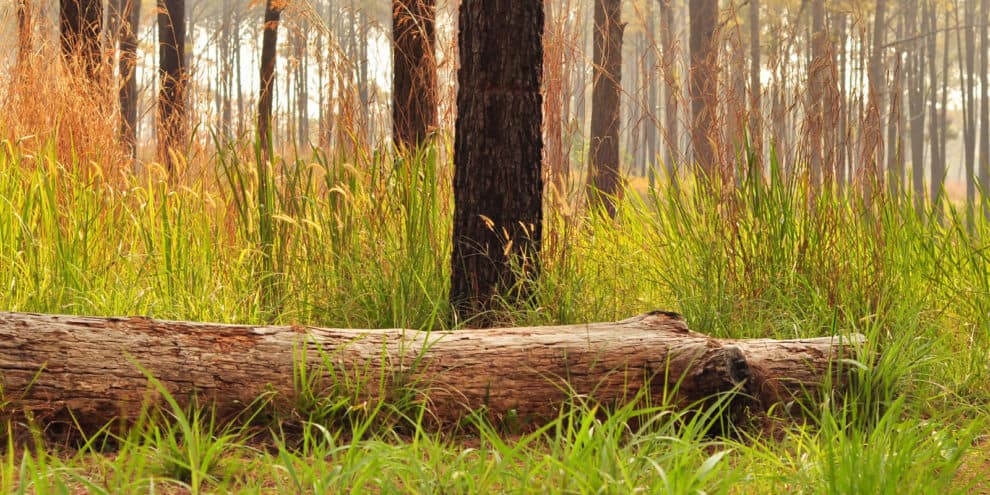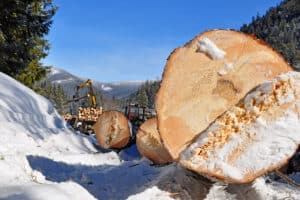When housing crashed in the United States, forest owners and timberland investors deferred harvesting sawtimber, the logs needed to manufacture lumber. They did this to take the “long view” and side-step low sawtimber prices, waiting for stronger markets. In 2012, Forisk added a “forest supply module” to its forecasting of pine stumpage prices to estimate potential supply effects on timber prices. What have we learned? In particular, have forest supplies changed in ways that affect stumpage price recoveries at the local market level in the near-term?
Estimating Supplies
Forisk uses a measure of “removal years” – accessible inventory divided by removals – to identify local markets with potential supply imbalances. This approach builds on research and common metrics used for other natural resources. The removal year estimates how many years it would take to deplete standing inventories, given a set annual harvest level. We compare the current removal years to a benchmark specific to the local market or state over the previous 10 years. In doing this, we estimate inventory levels that account for pine grade specifications, timberland ownership and forest accessibility associated with steep slopes and hydric (wet) sites.
For nine of the eleven states studied by Forisk in the U.S. South, average removal years range from 14 to 24. In other words, at the state level, a typical “forestry” state has 14 to 24 years of standing pine grade inventories during normal times. Today, for 2013, all eleven states have at least five years more of inventory relative to historic averages. However, strengthening markets and increasing wood demand have already started to put a dent in excess inventories. In forecasting wood demand through 2023, Forisk estimates that up to six of the 11 states move back into normal inventory ranges by the end of 2014.
Timber Price Implications
Today, the theory that pine grade accumulated, possibly to excess, on the stump in the U.S. South is holding water. Historical research and quantitative relationships reinforced the notion that (1) stumpage prices would lag increased demand and pricing for softwood lumber and (2) excess forest inventories could further dampen pine sawtimber price recovery.
Quantitative evidence confirms that pine grade stumpage prices lagged increases in softwood lumber prices. And the slow recovery of pine grade prices in 2012 showed greater dampening than estimated by the Forisk Forecast. South-wide, actual 2012 pine sawtimber prices in the South were 1.6% lower than Forisk’s estimate. At the state level, pine sawtimber prices were, on average, $0.21 per ton lower than forecasted by Forisk. While we cannot claim or confirm causality – we cannot prove that oversupplies produced slower growth in pine grade prices –we can establish the relative consistency in the story of demand-versus-supply across states.
Timber prices in states with the most severe pine grade “oversupplies” appeared less sensitive to increases in wood demand. This includes states, for example, such as Georgia and Mississippi. While these estimates do not specify the situation in any given wood basket or for any given timberland property, they do support the evidence that supplies have affected stumpage markets selectively.
This content may not be used or reproduced in any manner whatsoever, in part or in whole, without written permission of LANDTHINK. Use of this content without permission is a violation of federal copyright law. The articles, posts, comments, opinions and information provided by LANDTHINK are for informational and research purposes only and DOES NOT substitute or coincide with the advice of an attorney, accountant, real estate broker or any other licensed real estate professional. LANDTHINK strongly advises visitors and readers to seek their own professional guidance and advice related to buying, investing in or selling real estate.










Timberland is good for more than just timber. That is , if it is a varied wood.
My timber land has dogwood, redbud, cherries,(cherries to eat and all these small “babies” to sell for transplants. There are many maples that can be used for making maple syrup. Black walnuts can be scattered in open fields and let nature take it’s course, bring many more little black walnut trees to manage and grow 20ft trunks for veneer if they are striped of the leaves every year.
Forests are also good climates for mushroom, ginseng and fernery. IF a forest is well managed it can be very profitable.